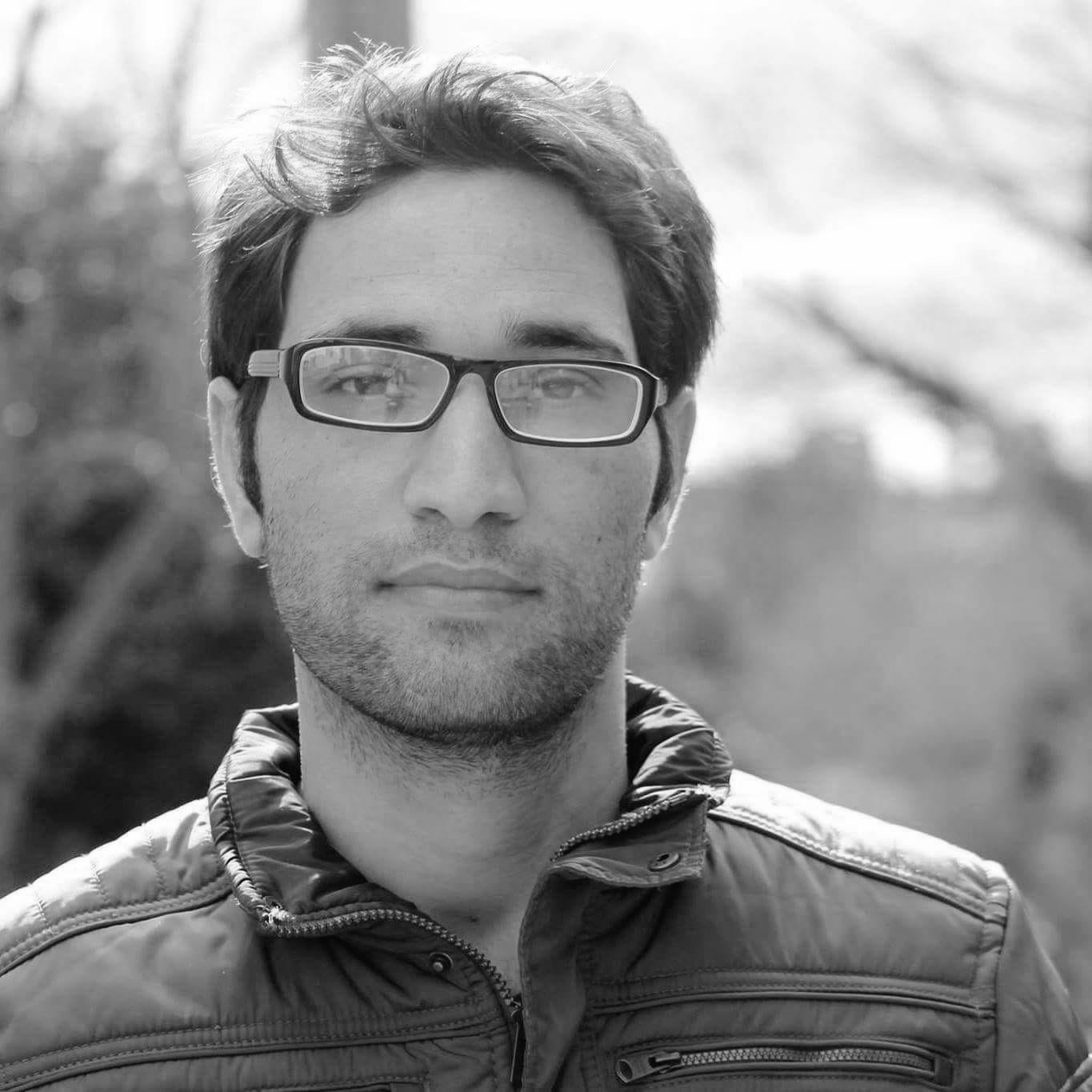In recent months, anti-regime protests have broken out across Iran, with the latest eruption of these in the Arab southwestern region of Ahwaz.
The people of the region, one of the poorest in Iran despite being the richest in natural resources, took to the streets initially to express anger at the latest anti-Arab insult in a programme broadcast on the state-run Islamic Republic of Iran Broadcasting (IRIB) TV network, which essentially denied the Ahwazi people’s existence.
Although the TV programme was the catalyst for these latest protests, it was only a small incident in a far larger policy of systemic racism towards the Arab minority in Iran, with the demonstrations unleashing a wave of long suppressed anger at decades of injustice.
The demonstrators called for the right to education in their own native language, currently denied to Ahwazis; they demanded the right to the oil industry jobs which the regime gives to ethnically Iranian settlers who are offered inducements to move to the region where 95 percent of Iran’s oil and gas reserves are located. The demonstrators also protested against the confiscation of Ahwazis’ lands, the confiscation and demolition of Ahwazis’ homes, and demanded an end to the policy of diverting the once-lush region’s rivers to other more arid parts of Iran which has led to widespread desertification in much of Ahwaz.
Ahwaz, SW #Iran
Video footage shows security forces violently arresting Protesting youth. At least 160 people were arrested as protests over insults by state TV against Iran’s Arab community continue in the cities of Khuzestan Province. #IranProtests pic.twitter.com/HYyicKzHu5— IRAN HRM (@IranHrm) 6 апреля 2018 г.
The protesters called for an end to the state-sponsored racism that allows terrible persecution of Ahwazi people on the basis of their Arab ethnicity, and for the release of the many political prisoners, including human rights and cultural activists, imprisoned and often sentenced to death simply for supporting freedom.
Despite knowing that they might face arrest, torture, imprisonment and death penalty for speaking out for justice, the protesters chanted for freedom for the prisoners, demanding an end to persecution and torture of detainees.
Urging The #Humanrights organisations to take an urgent action for the freedom of Arab prisoners
At least 400 people were arrested as protests over insults by state TV against #Iran‘s Arab community continue in the cities of Khuzestan. #IranProtests@AmnestyIran @hrw @HRF pic.twitter.com/H0pKWEoo0U— IRAN HRM (@IranHrm) 7 апреля 2018 г.
The catalyst for the protest was segment from a children’s TV show made for the Nowruz celebrations, which showed different dolls being matched with different areas of Iran, with each dressed in their customary local garb; the 8 million Ahwazis were very deliberately completely omitted from representation, with the show instead using a doll wearing the traditional costume of the ethnically Persian Lor tribe, many of whom have been brought to Ahwaz as settlers in a bid to change the demographic balance of the region. Whilst this was a relatively minor slur, it was, for many Ahwazis, the metaphorical straw that broke the camel’s back after decades of oppression.
The slogans chanted by the protesters reflected anger at a wide variety of issues, from the Iranian regime’s customary repression and discrimination to its policies of demographic change and of depriving Ahwazis from any share of the vast natural wealth extracted from their own lands or even of employment.
During these first demonstrations, the protesters shouted slogans against the regime leadership officials, including the Supreme Leader Ayatollah Ali Khamenei, President Hassan Rouhani, and the head of the Shura Council Ali Larijani, as well as condemning the widespread use of racist rhetoric against Arab peoples
The demonstrators expressed their contempt at the regime’s anti-Arab rhetoric, chanting, “Ahwaz is my homeland” and “I am an Arab and proud of it.”
They also accused the regime and its various component bodies of deliberately marginalizing Ahwazis in every aspect of life in their rich oil region.
These initial protests led to an outpouring of solidarity from fellow Ahwazis, with activists launching a hashtag campaign entitled ‘I Am An Arab’ on social media, which quickly spread across Ahwaz, leading to the outbreak of impromptu protests across the region.
The regime’s security forces and Islamic Revolutionary Guards Corps (IRGC) reacted with their customary viciousness against protesters, with hundreds of military vehicles carrying heavily armed uniformed personnel deployed across the area; the regime troops and militiamen brutally attacked the demonstrators using teargas, rubber bullets and batons, with hundreds of protesters arrested simply for participating in demonstrations. According to the latest reports, at least 400 people were arrested at the protests and many others have been detained since.
The regime’s brutal reprisals did not end there, with the regime personnel also suspected of being behind a horrific arson attack on the Nawares Café in the regional capital, a popular venue for activists and young people, which killed at least 11 people including children.
Those arrested have been sent to facilities operated by the Information Ministry, the Revolutionary Guards, Operation Karoon, and law enforcement. Many reportedly face being transferred to Sheyban Prison and others to the infamous Sepidar Prison. Other detainees were transferred to other cities.
Among those arrested are dozens of women, adolescents, and young people between the ages of 16 and 25. Some have sustained wounds. Family members of some detainees have themselves been taken into custody while seeking information from authorities on their loved ones’ whereabouts.
Neither officials, government organizations, nor official media have commented on the number of arrests or the whereabouts of those arrested. Following protests over the arbitrary arrests of citizens in the streets, Seyyed Mohammad Ali Mousavi Jayzari, a member of the regime’s Assembly of Experts and representative of the Supreme Leader’s office in Ahwaz’s Ku-ye Siahi district, gave assurances that all those arrested would be freed. Many regard Jayzari’s statements as an effort to quell widespread discontent.
According to reports from human rights activists, the majority of arrests were made in Ahwaz city, Kot Abdullah, Abadan City, Mallashiyeh, Ain 2, and Mahshor Port areas.
The protests were geographically more widespread than previous demonstrations, with the town of Amidineh witnessing protest activity for the first time. Peaceful protests also took place in central Ahwaz, Ku-ye Zavieh, Ku-ye Alavi, Kot Abdullah, Ain 2 (Seyyed Karim), Mallashiyeh, the Sheyban area of Bavi County, Hamidieh City, Amidieh[Omidyah in Farsi] , Mohammareh[Khoramshahr in Farsi] , Abadan, Mahshor Port, and villages neighboring Ahwaz.
Despite the massive number of arrested Ahwazis, Iranian human rights groups in exile have failed to issue any condemnation of the regime’s barbaric oppression, maintaining their customary silence as they have over previous similar regime crackdowns. Indeed, it’s bitterly ironic that a primary reason for anger among many Ahwazi activists is the lack of any solidarity from fellow Iranian rights activists in confronting the regime. Whilst these groups dedicate extensive coverage to the plight of imprisoned ethnically Iranian political activists in Tehran, they disregard the similar suffering of Ahwazis, Turks, Kurds, Baluchis and other minority groups.
From the perspective of many Iranian media activists in exile and human rights groups, Ahwazi Arabs are separatists and viewed as a potential security threat and danger to Iran’s territorial integrity, with supportive media such as the Farsi-language Voice of America (VOA) and BBC Fars adopting the same policy. If massive numbers of protesters were arrested in Tehran or other Persian areas, many Ahwazis believe that this would receive saturation coverage across media, ad continuous coverage by Amnesty and other human rights bodies. Due to this perceived bias, many Ahwazis are cynical about the wider activism movements, expressing frustration at what they see as selective support for freedom. Speaking on condition anonymity, an activist from Ahwaz City said, “Opposition to occupation, murder, colonialism, human rights abuses of all kinds shouldn’t be selective; despite acknowledging rightly that the occupation and colonization of Palestine is bad, Western media ignore the plight of Ahwazi Arabs who are suffering extreme brutality at the hands of successive Iranian regimes from 1925 right up to the current day.”
As well as stepping up its arrests and harassment of activists, the regime has also cut off internet services to impede Ahwazi activists from posting videos of the protests and to prevent them from conveying the true image of Iran to the outside world.
Despite the regime’s ever-more draconian efforts to crush all dissent, however, activists are refusing to give up, instead adapting their tactics to evade capture, with many launching nighttime ‘guerilla attacks’ to paint graffiti supporting freedom or vandalizing regime buildings, carrying these out at night in order to evade arrest, hiding their faces with scarves pulled up over their mouths and noses to avoid being identified by the authorities from CCTV footage.
The Iranian state has imposed a tight blockade on the issue of Ahwaz and silenced any Ahwazi voices trying to reach the free world and international humanitarian bodies for many years, preventing the international media from accessing Ahwazi areas for fear that they would see the tragic reality experienced by the Ahwazi Arab people. This has taken place in tandem with an effective state of siege against any Ahwazi voices, meaning that there is no Ahwazi presence regionally and globally, despite the fact that the people of Ahwaz have been and continue to be crushed under Iranian occupation, with at least 15 uprisings taking place over the 92 years of its duration, with the most recent uprising dubbed “the Uprising of Dignity”. Thousands of Ahwazis standing up for freedom and dignity have been martyred and countless numbers imprisoned and tortured in Iran’s jails.
The mutual interests of the Iranian leadership and the world’s governments have, unfortunately, played a major role in the international community’s neglect towards the issue of Ahwaz, meaning that the international community has abandoned the Ahwazi people to face their fate in the face of the most brutal terrorist regime recognised by international organisations.
In recent times, thanks to the information revolution and the international spread of social networking and social media, Ahwazi people have finally been able to dramatically break down the wall behind which our just cause has been besieged and to reach out to the free world. This has enabled Ahwazis to deliver their voice, raise awareness of our people’s suffering and form links with international bodies. Despite this, the international community still doesn’t give adequate consideration to the just cause of Ahwazi freedom and, despite the just and noble nature of the cause it has failed to attain any attention in Western media.
Rahim Hamid is an Ahwazi Arab freelance journalist and human rights advocate who mainly writes about the plight of his people in Iran.
He tweets @samireza42




Write your comment
You must be logged in to post a comment.